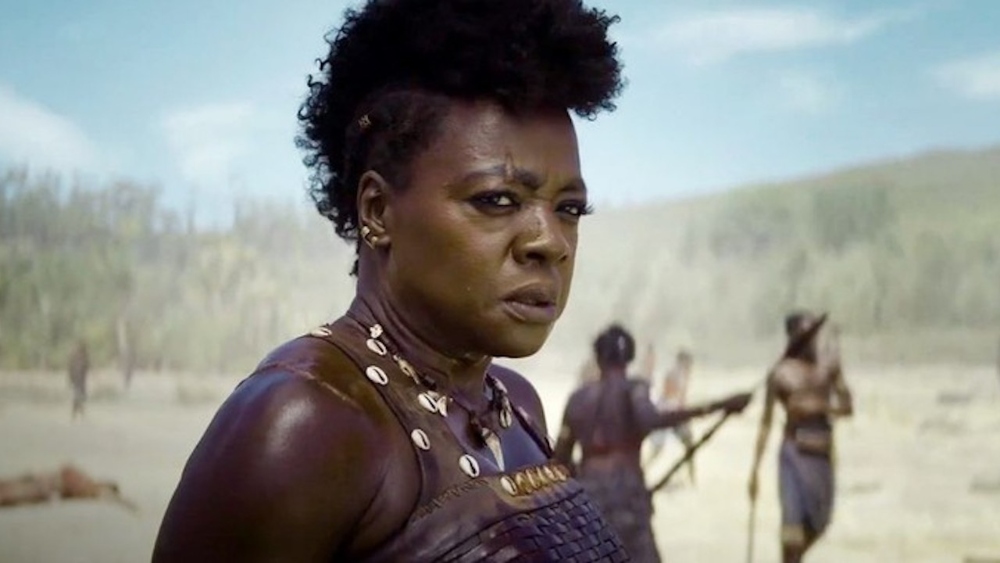
The continued box office success of The Woman King is, first and foremost, a tribute to its star, Viola Davis. The film has grossed $76 million worldwide to date, and it has been Davis’ commitment to the project — both in her portrayal as the Agojie warrior Nanisca and as the film’s producer — that has impressed moviegoers around the world.
Directed by Gina Prince-Bythewood, the film’s hard-hitting battle sequences are another reason the audiences are coming away floored by The Woman King, in which fights erupt in villages and towns, spreading over paths, alleys, squares, and balconies. The furious action employs knives, lances, ropes, rifles, and even bombs, so designing, choreographing, and executing the film’s many stunts while ensuring the safety of the cast and crew took careful preparation over the course of several months.
Veteran stuntwoman Jénel Stevens helped design the film’s fight choreography in addition to doubling Viola Davis and performing other stunts as well. A SAG Award winner for Black Panther and Avengers: Endgame, Stevens has also worked on several other Marvel projects as well as The Gray Man and Orange Is the New Black.
Stevens is currently working on Joe Carnahan‘s Shadow Force, which stars Kerry Washington and Omar Sy as an estranged couple who are forced to go on the run with their son when their former employer puts a bounty on their heads. She spoke with Below the Line via Google Meet about working with Davis and the previz team on The Woman King as well as the importance of rehearsal time and her long-term goals in the industry.
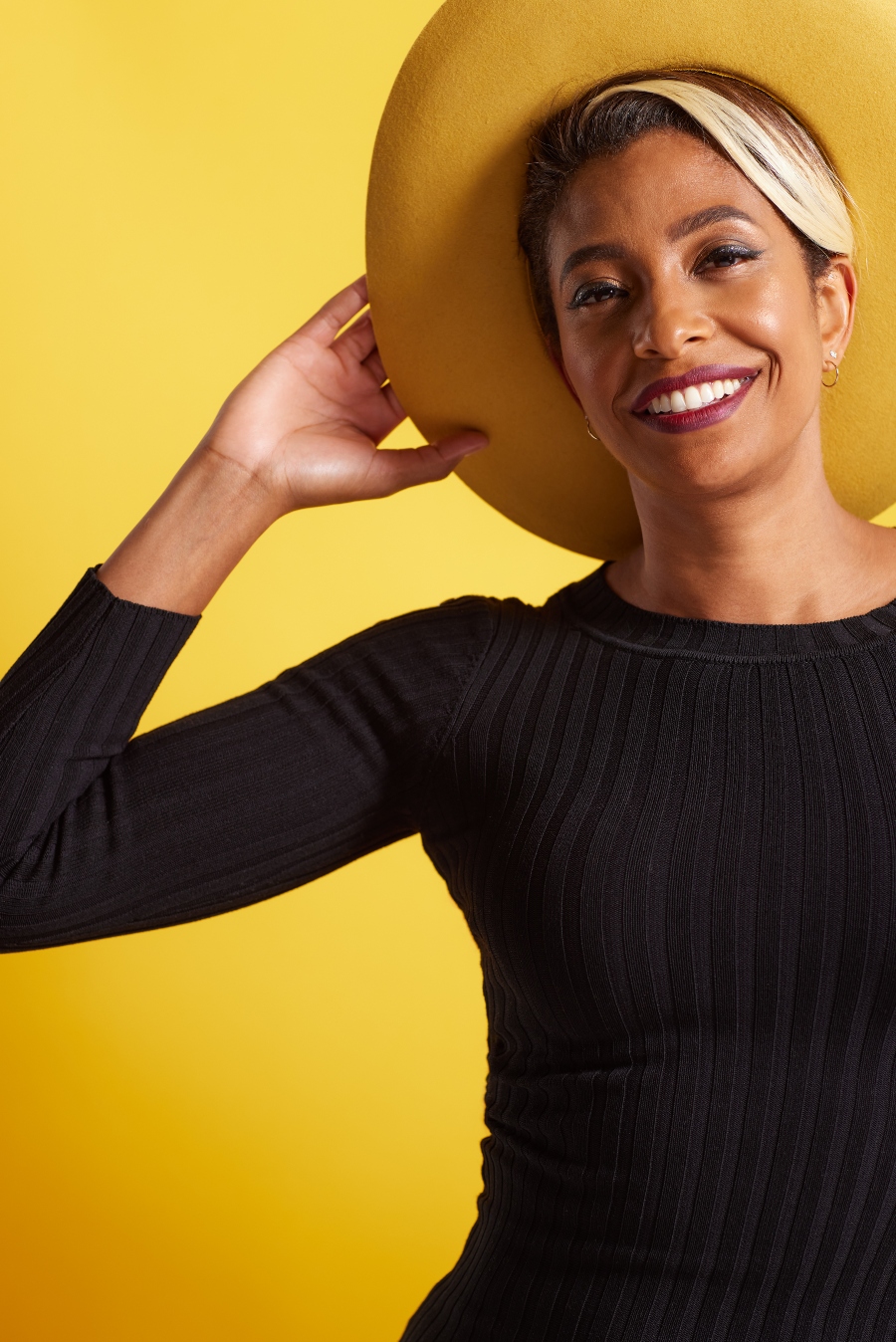
Below the Line: How did you first get involved with The Woman King?
Jénel Stevens: Danny Hernandez, the Stunt Coordinator, and I come from the same martial arts background. He and his team had already started the fight previz when I came on to train with Viola. My job was to teach her and some of the other South African performers about bladed weapons — machetes and knives, and such.
Johnny Gao, another Fight Coordinator, did a lot of the staff and spear training, especially with Sheila Atim (Amenza). So the fights were a collaboration. We used very basic functional weapon strikes to create the choreography. Simple, yet effective.
BTL: Did you do a lot of historical research?
Stevens: To an extent, but we weren’t making a documentary.
BTL: Are swords your specialty?
Stevens: Not so much. I train in the weapons art of Kali, which incorporates knives. Single knife and double knife Kali sticks, which are about 12 to 18 inches in length. So that does correlate to the machete and staff. Pretty much anything you can wield can be done through the Kali system.
BTL: How did you work with the previz team on The Woman King?
Stevens: It was a long process because there were a lot of changes. Johnny put together the fight sequences, [and] other performers contributed as well, including me. What happens is, when we read the script, a lot of times the fight sequences aren’t written out fully. We get a certain creative license with the stunts [and] submit our work to Production. Production gives us notes, we go through more edits, and we continually revamp the fights.
We build them big so we can cut down if necessary. That process takes months. And even on the day, the fight might change because the environment’s different. There are other people involved, so the set may restrict some movements. It’s a collaborative effort between [the] Stunt department and Production, but it’s really the coordinators who have this vision and put together these sequences.
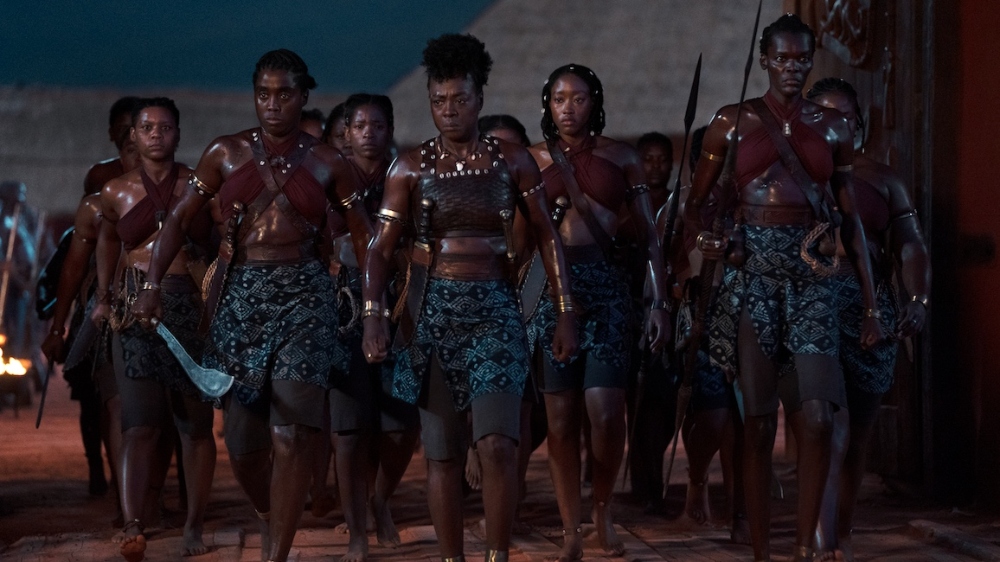
BTL: Each fight has a narrative. You know who wins and who loses. But is everything else pretty much open?
Stevens: Especially in the beginning. We all collaborate, and then the fight coordinator shoots the previz. That’s the initial submission to Production. It’s a chance to see something visual instead of on paper. Sometimes writers aren’t completely sure what is physically possible.
BTL: This is all on a rehearsal stage?
Stevens: We have a rehearsal space with weights and fitness equipment. We can put together movements in the open area, and we can work with weapons and props. If we’re lucky, we get to work to scale if we have the measurements of the sets. Then we start to teach the actors their fight beats and stuff like that.
We tell them, “Don’t get married to this.” We might put together little vignettes of fighting that won’t necessarily be part of the choreography. A big part of my job on this project wasn’t the actual fighting, but helping to keep the actors’ minds open. Help keep them doing the strikes and the hits. We’ll say, “This is fight sequence number one,” or number two. But it might not go to screen. It’s more to keep them sharp and not get married to one specific thing, because more than likely it will change on the day of the shoot.
BTL: Did that happen at all on The Woman King?
Stevens: Absolutely, absolutely. That’s why giving the actors little fight sequences in rehearsal, maybe it was five little fights with six or seven beats at a time, helps to change and modify fights.
The camera plays a big part, too. We plan to shoot from one angle, then on the day, the DP wants to shoot from another angle. So now we have to change things and make sure the hits still sell. Instead of a hook, maybe it’s a cross. Instead of an uppercut, a jab. Each one of the fights went through that process.
BTL: How much time do you have to work with the actors?
Stevens: Viola and Thuso [Mbedu, who plays the young fighter Nawi] were starting to train in April or May of 2021. I came on in September. We had a month in Los Angeles and then a couple of weeks in October when we started on camera in South Africa. But even when we were on camera, there was time to rehearse.
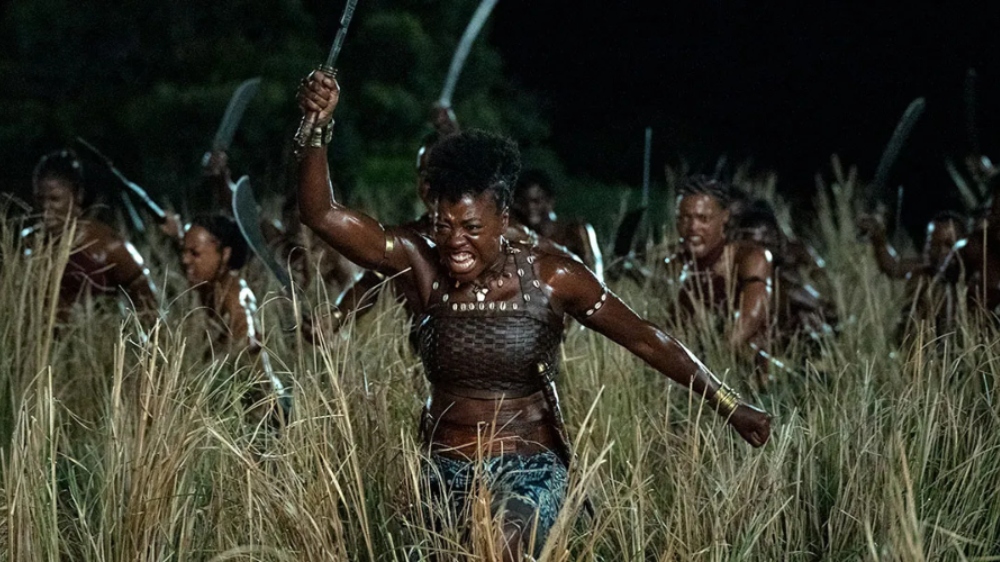
BTL: What about working with Viola Davis?
Stevens: She went through several different stages each day. She might have machete and knife [training] with me, then staff [training] with Johnny, then fitness training with her trainer, Gabby [Gabriela Mclain]. Anytime she was close by, we could rehearse. I loved her mindset. She was very dialed in, very determined to make it look as badass as possible on screen.
She not only looked at how to throw her weapon around, but she looked at my footwork. She wanted to make sure she was moving the way she was supposed to be moving. Even on her off days, she was in the rehearsal space. I had to tell her sometimes, ‘You need a break. Get some water. Please.’ [laughing]
That woman is phenomenal. She had a lot of respect for stunt performers, [and] she was very warm, very open to free conversation. Sometimes she was too nice. We would go through a sequence and she would hit a guy and say, ‘God, I’m so sorry.’ I had to say, ‘No, keep going!’
BTL: Can you point out some of the times you doubled her?
Stevens: [laughing] Any time you see her fall on her face, that was me. In the fight sequences, it might be a strike here or there. It’s teamwork. We had to make sure, going through it, ‘OK, is Viola comfortable doing this? Is Jimmy [Jimmy Odukoya, Nanisca’s enemy Oba Ade] comfortable receiving this?’
We had some cool stunts that were cut out of the movie, like a jump off a balcony that I rehearsed. We ran out of time in terms of telling the story of how she got to the second floor.
BTL: That final fight had some incredible moves. And I was impressed with how you incorporated the set design, like a wall of barrels lashed together.
Stevens: Viola had to do some of those takes, but in the high-impact situations, I was the one getting rammed into those barrels. We tested them first to see what would nick, where the sharp edges were, [and] could we use some foam piece [or] maybe put a pad in. Then we had to move them over a bit because there was a lip on the ground I didn’t want to hit, especially barefoot.
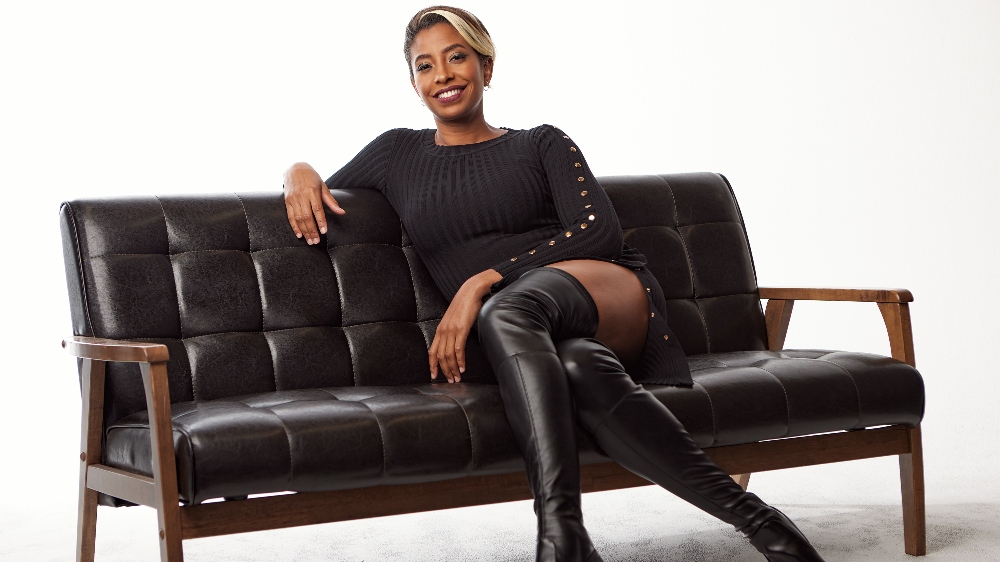
BTL: Let’s talk about safety, because these fights unfold on a huge scale.
Stevens: Safety first is the motto. We collaborate with the prop master and the VFX people. Cross all our T’s and dot our I’s.
A lot of actors had to be barefoot in this movie, so we had to make sure there was nothing sharp on the floor. It’s something people might not think about, but that I’ve experienced. They had thorns that were longer than my finger. One of the grounds guys was sweeping, and a thorn went right through his boot.
Stunts can’t be rushed, and [director] Gina Prince-Bythewood was very good about that. We ramp things up slowly. You don’t go into a fight sequence at game speed. We work it out first with the performers, see what the kinks are, [and] find out what might be dangerous. We start slowly, no faster than walking speed. Sometimes we won’t even put weapons in their hands. Then we’ll ramp it up to where they’re doing it at a speed we can film.
BTL: How did you get into the business? What’s your background?
Stevens: I feel like the business found me. I’ve been training my entire life for this profession without realizing it. I was a personal trainer before getting into martial arts. I reached a high level in martial arts and became very good friends with Dan Anderson and his wife Dasha, who run Anderson’s Martial Arts Academy. A co-worker helped me prepare a resume to apply for a stunt choreography job. There aren’t very many Black female martial artists in the business, so the timing was perfect.
BTL: What are your long-term goals?
Stevens: I’m on a path I’m really enjoying, which is stunt acting. That’s what I’m doing on Shadow Force. I’ve dabbled in stunt coordinating, but right now stunt acting is my primary focus. What I love about this industry is that you can go in so many different directions.
The Woman King is still playing in theaters nationwide, and it’s worth seeking out on the big screen.





